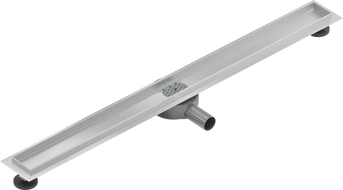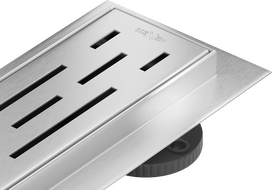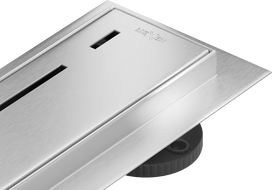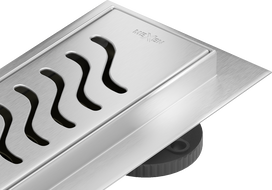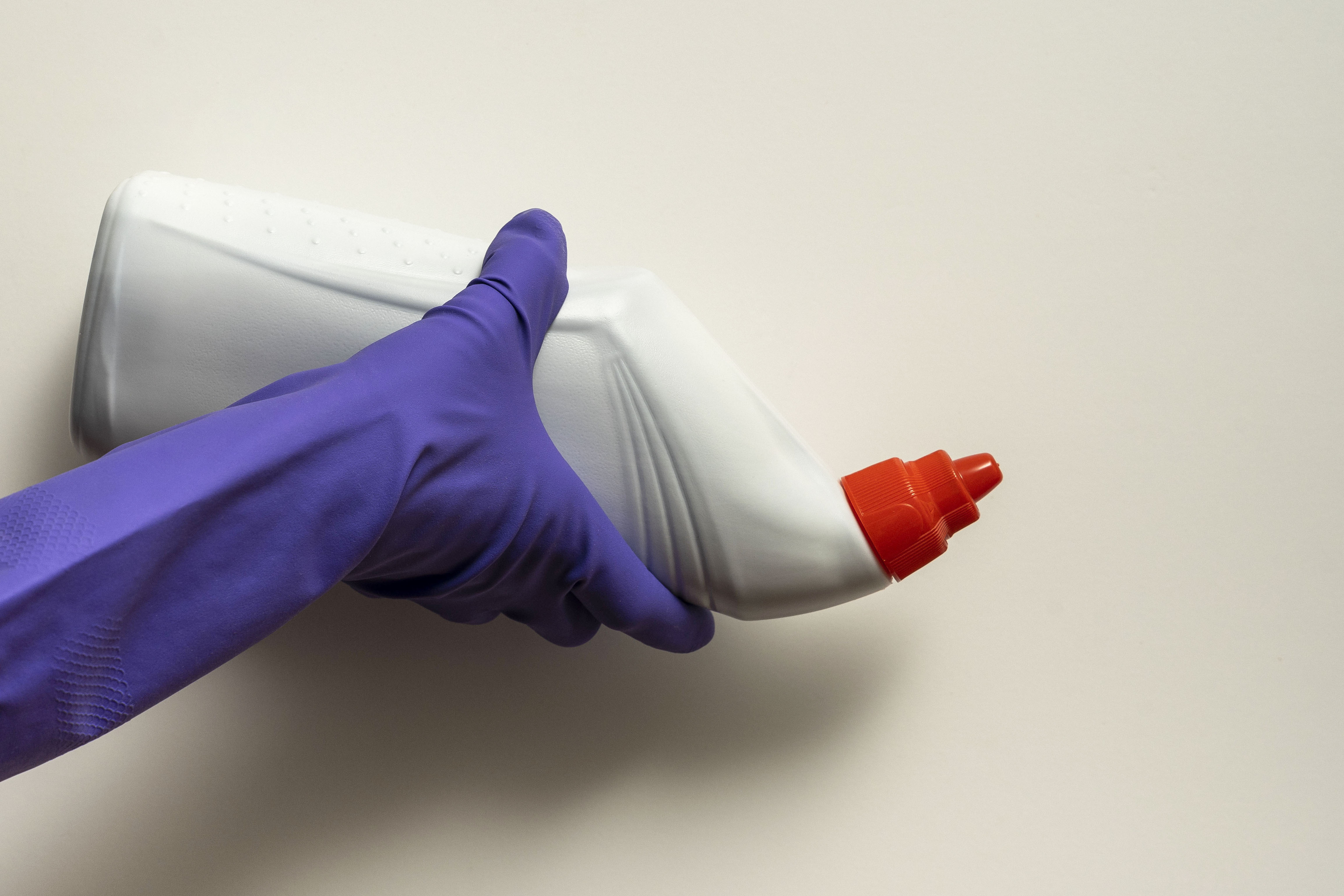
When renovating the bathroom, we increasingly choose to do without a shower tray. The shower cabin is placed directly on the bathroom floor in this situation. This is a very modern solution, allowing for the creation of an unconventional bathroom arrangement. However, to ensure the drain allows for efficient water removal, it must be cleaned regularly. It is not a complicated task and can easily be done independently, yet it should not be neglected!
How to keep the linear drain clean?
Daily showering means that various contaminants enter the linear drain with the water. First and foremost, this includes foam and detergent residues used during the shower. Secondly, hair and sometimes larger debris such as pieces of tissues or cotton swabs enter the drain. Solid elements entering the interior of the linear drain can block water flow, and the accumulating contaminants can cause unpleasant odors to emerge from the sewage system.
Those with small bathrooms know how troublesome a clogged shower drain can be. Instead of going into the drainage hole, water spills onto the tiles, necessitating floor cleaning after every shower. A clogged linear drain hinders the smooth flow of water from the shower. Water, foam, and other contaminants accumulating in the drain channel can form a deposit, which can ultimately lead to the complete blockage of the linear drain. To ensure trouble-free use of the shower zone, we must remember how important it is to clean the linear drain.
How to clean linear drains?
Cleaning a linear wall or floor drain, as well as cleaning the siphon, is not a particularly difficult task. You can handle it on your own in your bathroom. If done regularly, it won't take much time. If you notice that the optimal drainage capacity has decreased and water drains slowly, or if unpleasant odors are emerging from the drain, it's time to clean it immediately. If flushing with running water is not enough, more effective methods should be employed.
First, you can use a simple homemade method for linear drains that involves pouring about half a cup of baking soda into the drain hole and dousing it with an equal amount of vinegar. A chemical reaction between these ingredients will occur, causing the deposit to separate from the drain elements. Then simply rinse the drain with warm water and the contaminants will be able to flow freely through the sewage system. If necessary, the entire process can be repeated.
For more stubborn contaminants, try cleaning the drain using one of the available pipe unblocking agents. However, remember to exercise extreme caution as these products have irritant properties. When choosing chemical agents for cleaning the drain, it's worth familiarizing yourself with their composition and properties. This will help avoid a situation where too aggressive an agent damages seals or drain components.
How to deal with a heavily clogged linear drain?
Sometimes it may happen that cleaning using home methods and chemical agents doesn't work. If despite attempts to clean the drain, unpleasant odors continue to emerge and water still doesn't drain as quickly as it should, it's likely necessary to disassemble it to clean the siphon and the linear drain. First, you need to deal with the external part of the drain. One of the most common problems is clogging the drain grate with hair or other small elements that may have found their way in.
If the model of the drain allows it, remove the siphon and try to clean it thoroughly. By hand! You have to get a little dirty, there's no choice! When putting it back in place, pay attention to the position of the sealing o-ring of the siphon, as it is the one that blocks unpleasant sewage odors. If, after cleaning the siphon, effective water drainage is still not possible, you can remove the top cover of the linear drain and remove any deposits with a brush.
The narrow width of the linear drain often makes it difficult to clean, so it's important to keep it clean and ensure it doesn't become clogged. The easiest way is to rinse the drain with running water after each shower. It's very important and worth emphasizing - the linear drain should be cleaned systematically, as this will avoid situations where professional help is necessary.



















